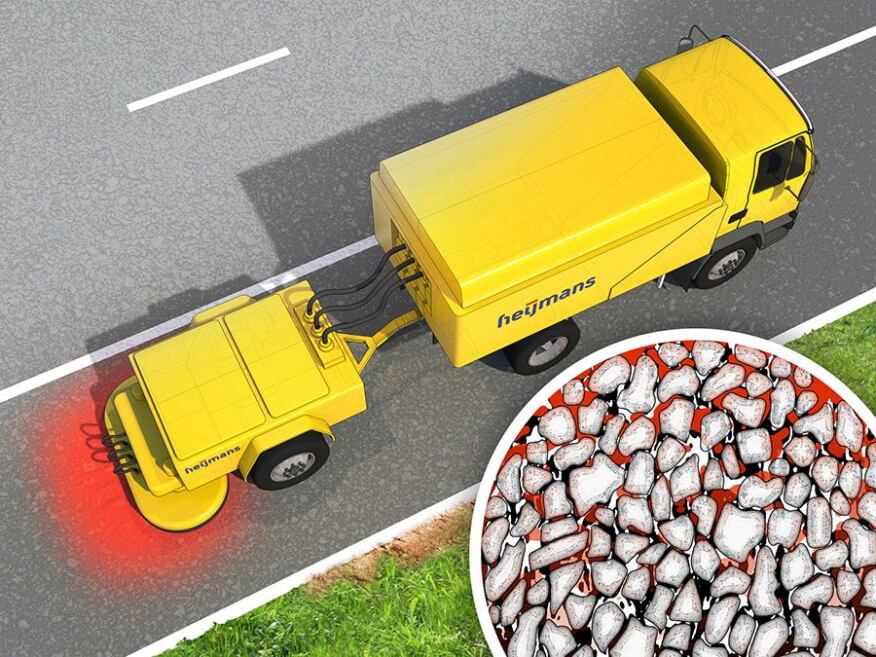In 1988, the author Tom Forester claimed in The Materials Revolution: Superconductors, New Materials, and the Japanese Challenge (The MIT Press, 1988) that three mega-technologies would one day dominate global industrial activity: information technology, biotechnology, and new materials. As we witness massive achievements in each of those areas, it’s hard to find fault in Forester’s claim. Even more significant, though, are the connections that are developing among them, which continue to increase in quantity and scope. The most intriguing new materials, for example, are often linked to developments in information technology or biotechnology—and oftentimes both.
The following five material typologies are poised to enhance their integral connections in 2015 through innovations in areas such as interactive surfaces, soft machines, and self-healing capabilities.
Digital-Physical Interfaces

An outcome of merging information and materiality, digital-physical interfaces represent the immediacy of real-time interaction in the physical world. One example of such an interface comes from the MIT Media Lab’s Tangible Media Group. Transform is a tabletop installation made up of three interactive zones of dynamic blocks, which instantly swell as a pixilated wave when triggered by motion. Other mediums that offer novel corporeal connections to the digital take the form of touch-sensitive electronic textiles, kinetic walls, and projected multisensory displays.
Biocomposites

Joining woven textiles, biocomposites are now made using a variety of methods and materials, including fungus and agricultural waste. And increasingly, designers are employing this organic matter in the fabrication of products like furniture and building modules. The Artichair, by Edinburgh, Scotland–based designer Spyros Kizis, features a molded seat made of discarded parts of the cardoon—an edible plant native to the Mediterranean region, also known as the artichoke thistle. Like the 3D Weaver, Kizis’ work suggests a future for consumer products made of organic materials that safely biodegrade at the end of their usable lives.
Three-Dimensional Textiles

The next phase of woven fabrics offers mechanical capabilities similar to those of high-performance composites. London-based designer Oluwaseyi Sosanya uses his 15.75-inch-wide by 19.7-inch-tall 3D Weaver loom to craft such textiles out of solo strains of organic material including paper, wool, and cotton, as well as carbon fiber and metal cable. The resulting multidimensional weaves—honeycomb, zero-to-90 degree (shown), and zigzag—each respond to impact differently, and their applications range from shoe soles to medical implants. The development shows how soft composites can be made from biocompatible materials, replacing traditional petroleum-derived rigid alternatives.
Soft Machines

An alternative to conventionally rigid electronics, flexible processors called soft machines spell the future for powering sensing skins and wearable technology. Earlier this year, mechanical-engineering researchers at Purdue University found a way to fabricate these processors at the micro scale. Their process involved creating a sensor network, or a pattern of lines, using a liquid-gallium alloy embedded in a silicon elastomer. The gallium oxidizes to form a thick skin that affords structural stability, allowing the printed structures to be oriented in any direction—a step toward one day powering large and flexible, sensing skins.
Self-Healing Materials

By emulating the restorative capacity of human skin, self-healing materials offer a novel method for resilience in the built environment. Most self-repairing materials are polymer-based, yet such technology may now be found in concrete and mineral-based composites. The Delft University of Technology in the Netherlands has developed self-healing asphalt for resilient roadways. The induction-based product includes electrically conductive fillers connected in closed-loop circuits. When a micro-fissure appears in the road surface, the conductive materials automatically generate eddy currents that melt the surrounding bitumen, sealing the crack against further propagation. For those who face the ubiquitous potholes, cracks, and other forms of roadbed degradation, the benefits of a more robust asphalt option are obvious: a longer life and lower costs, a diminished carbon footprint, and easier passage.
















